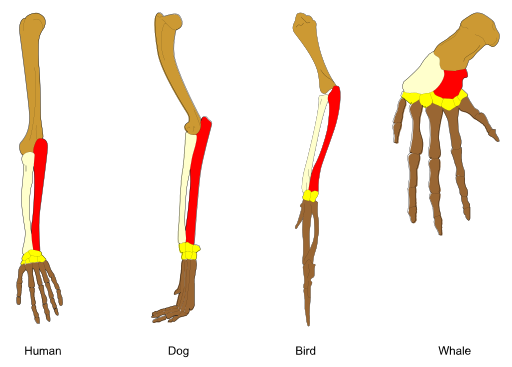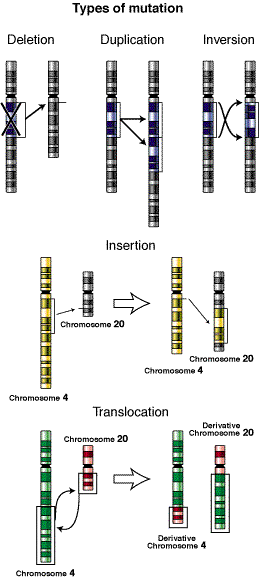Fossils
Fossils are the remains of past life that are preserved by natural processes. Often, they are trapped within layers of rock, hidden from the surface for millions of years. These can be entire bones, shells, or even imprints of plants left in rock. Check out this website that does an excellent job showing how fossils are formed and discovered.
Fossils from related species from different time periods can be compared to evaluate the evolutionary history associated with them. To determine how old a fossil is, scientists do what is called radiometric dating. The rock layer that the fossil is in contains radioactive isotopes with calculable half lives. A half life refers to how many years it takes half the radioactive material to decay. If you calculate how many half lives the rock has undergone, you can determine how old it is. So if you know two species are related and they had fossils that were found in rock 3 million years apart, you can make conclusions as to what evolutionary mechanisms led to that. Fossils are perhaps the best piece of evidence as to what the Earth used to be like, and what modern organisms arose from.
Homologous Structures
Homologous structures are structures that species have that have similar internal structure based on common ancestry, but different function based on selective evolutionary pressures. Internally, homologous structures are very similar, but externally perform completely different functions.
Vestigial Structures
Vestigial structures are structures an organism has that shows evidence of something that was once used, but is no longer needed. Vestigial structures are evidence of structures that ancestors used to have,but have not totally been selected against. The following are examples of vestigial structures seen in modern organisms:
- Coccyx in humans:
- The coccyx is the anatomical term for the tailbone. The coccyx is located at the bottom of the vertebrae (backbone), and points inward toward the center of the body. It serves no major function to humans and can really be a pain in the butt if damaged. Other species such as apes and monkeys which have a coccyx, have a coccyx that points outward with a tail protruding through their posterior end. Humans having a coccyx shows they share a common ancestor with other primates, but natural selection has to humans no longer needing a tail for function.
- Appendix in humans:
- The appendix is a small hallow opening in the large intestine. Scientists struggle to determine if it has any real function in the modern human body. Appendicitis is a common disorder when the appendix becomes inflamed. Appendicitis often requires the appendix to be removed. Removal of the appendix has no effect on the body. It is theorized that the appendix was once useful in our ancestors immune systems, but now it is no longer necessary.
- Hip bones in snakes:
- Believe it or not, many snakes have hip bones. Some have hip bones that are so defined that they poke through the bottom of their skin. Snakes having hip bones, which serve as the foundation for limbs, show that snakes may have evolved from 4 legged tetrapods. In the past, they may have had legs for walking but over time, they began to slither and no longer needed legs to move around. The hip bones are remnants from past ancestors that walked on legs.

